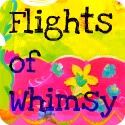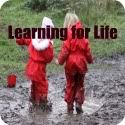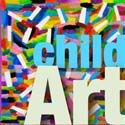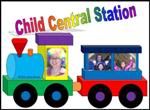As a preschool educator, mothers day and fathers day have always caused me a degree of mental anguish each year as they inevitably draw closer on the calendar. The reason for my anguish is twofold. Firstly, I adopt an emergent curriculum approach when planning the preschool program for the children within my care. Such an approach is far from conducive with the concept of demanding that children sit down and churn out ‘craft’ style gifts that have little or perhaps no meaning to them. Clearly, I am in no way suggesting that the children do not love and cherish their fathers and that they wouldn’t be delighted to present them with a gift, but I do feel that the subtle meaning behind honouring there father on a designated day probably eludes a child of four or five years of age. Secondly, and from a personal perspective, I grew up in a family whereby my parents didn’t really rate these days very highly, particularly in light of their growing commercialism, and this has no doubt resulted in me adopting similar views when I became a parent myself. Nevertheless, as an educator, I must acknowledge that these events are now firmly established cultural traditions within our society that are cherished by many of the families attending our preschool service. So to help myself reflect on the original motivation and history behind the decision to commemorate fathers (and mothers) day, I did some research. I was certainly hoping that I would find a little more substance to the decision beyond rampant commercialism.
Mothers day commenced in America with its origins being in the peace-and-reconciliation campaigns of the post-Civil War era. The motivation behind what were called “Mother’s Work Days”, was to bring together the mothers of Confederate and Union soldiers.
The campaign to celebrate a national fathers day ( History of Fathers Day) came about as follows:
“On July 5, 1908, a West Virginia church sponsored the nation’s first event explicitly in honour of fathers, a Sunday sermon in memory of the 362 men who had died in the previous December’s explosions at the Fairmont Coal Company mines in Monongah, but it was a one-time commemoration and not an annual holiday. The next year, a Spokane, Washington woman named Sonora Smart Dodd, one of six children raised by a widower (father), tried to establish an official equivalent to Mother’s Day for male parents. She went to local churches, the YMCA, shopkeepers and government officials to drum up support for her idea, and she was successful: Washington State celebrated the nation’s first state-wide Father’s Day on July 19, 1910.
From my reading, I got the distinct feeling that the message behind the establishment of these days was founded on commemorating the hardship and sacrifices parents endured for their children in what were times fraught with significantly more danger and adversity than those which face our current generation of parents. The impetus was clearly based upon building honourable and respectful relationships and promoting a reverence for the selflessness that characterised (and still does!) parenthood.
Then came the inevitable commercialisation. Opportunist retailers seized upon the chance to make a quick buck.
“In 1972, in the middle of a hard-fought presidential re-election campaign, Richard Nixon signed a proclamation making Father’s Day a federal holiday… Today, economists estimate that Americans spend more than $1 billion each year on Father’s Day gifts.”
Can you believe that figure? $1 billion each year! Know how better could that money be spent.
So, I returned to the idea of relationship building. Surely that is what mothers day and fathers day should be all about in this day and age?
The idea that began to grow in my mind focused on giving a gift that was far removed from the repugnant commercialisation of our time and that in fact could not be deemed as having any monetary value at all. I settled on the idea of a gift from nature, which ended up being the humble stick, the very thing that a father would have greatly valued as a child. The motivation was all about helping each father to make a connection with their child by recalling their own childhood experiences and to strengthen their relationship by spending time together. Hence the idea of a Magic Stick with an accompanying poem came into fruition.
The children at our preschool are constantly collecting and playing with sticks, as most children do, so to introduce the idea of making a magic stick for Dad was meet with great joy and enthusiasm. We all felt that every Dad really should have a magic stick and would be truly bereft without one!

And so here they are…

The photographs don’t do the sticks justice as they truly are very sparkly!

And not one is the same as another!

Accompanying each magic stick was the following poem:
For My Superhero
Today I have something for you,
A magical treasure to behold,
It is a stick,
I grant you it,
Wielding stories to be told.
When you were just a small wee lad,
You loved a stick or two,
But now it is a state so sad,
That you’ve cast all sticks from view.
So take this stick into your palm,
And feel its familiar fit,
Close your eyes and sense the calm,
As you quietly sit a bit.
With this stick, please journey a while,
Wandering through your child-like mind,
Wrench open that fragrant memory file,
Abandoned sticks a strewn you’ll find.
Take hold of your stick, brandish it,
Then to the door we’ll flee,
For the magic of its impish wit,
In nature is set free.
Come with me to a place on high,
Up to the garden wall,
Here we’ll see the dragon’s fly,
And we’ll smite them one and all.
Your stick will sail the puddled seas,
To save a bug a scurry,
That tumbled from the wind-blown leaves,
Swirling ‘round in a fearsome flurry.
Stick hastily points into the sky,
To silence that monster squall,
And as the time ticks slowly by,
The delicate leaves do fall.
Stick taps out a tune upon a rock,
A rhythmic sensory delight,
As a fairy in a rose petal frock,
Dances towards the night.
The day is done we must confess,
Time to relinquish our day in the wild,
But grasping tight to your stick no less,
You have memories anew to be filed. (Karen Green)
Presented as appears below:

When I was in the process of formulating this idea, I mentioned it to two of my close blogging friends and challenged them to write a poem too. So here are theirs as well, just brilliant!
Firstly, there is this clever one by Candy Lawrence from Aunt Annie’s Childcare.
Remember back when dads were boys
and went outdoors for all their joys?
No iPods, iPads, laptop games
and friends shared more than Facebook memes.
Kids climbed up trees and built with rocks,
made houses from a cardboard box,
played chasings out of adults’ sight
and no-one asked if it was right.
Outdoors was great. You’d run and run.
You’d play with sticks- just like this one.
“Don’t poke your eye out!” called your mum,
but never stopped you having fun.
Now plastic fills a young child’s life;
outdoors it’s feared we’ll get in strife.
We’re watched like hawks and sticks are banned,
outdoors you’re saying “Hold my hand!”
Our freedom has been locked away;
childhood was different in your day.
We need to run, get wet, get cold
and laugh and yell before we’re old.
We’re asking, “Dads! Please let us play
the simple, fun, old-fashioned way.
Outdoors is best for girls and boys
and simple sticks can still be toys.”
And then this lovely one from Alec Duncan from Child’s Play Music.
Hold this for me, Dad – it’s not a stick.
Really it’s a wizard’s staff,
And we will fight dragons together,
Heroes, side by side.
But wait, Dad – it’s not a wizard’s staff.
Really it’s a fishing rod,
And we will catch fish together,
And dangle our toes in the water.
No, no, you see, Dad – it’s not a fishing rod.
Really it’s a shining horse,
And we will ride races together,
As the earth shakes beneath our hooves.
Oh, I know, Dad – it’s not a shining horse.
Really it’s a hammer,
And we will build a house together
To keep us warm when the cold wind blows.
And the best thing, Dad – do you know the best thing?
Outside there are more sticks,
So many stories waiting to be told:
Let’s find out what they are.
We’ll write them together.
Taking the time to reflect on practice and determine the true meaning behind the things that we do just because they have always been done, often brings about greater understanding and improved practice.
🙂


































































